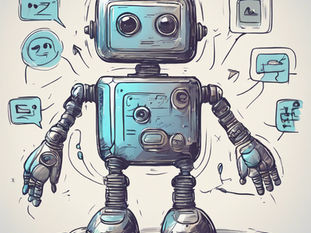
Unlocking the Power of AI Models in Education: A Teacher's Guide to Adapting Lesson Plans
0
0
0
Teaching is a multifaceted art that requires educators to constantly innovate and adapt to the diverse needs of their students. Designing a lesson plan that caters to two different types of learners can be a challenging endeavor, often requiring a significant investment of time and resources. However, what if I told you that there is a way to streamline this process and save valuable time? Thanks to the integration of AI models in education, teachers now have a powerful tool at their disposal to create effective and customized lesson plans that cater to the individual needs of every student.
Why AI Models are Game-Changers in Education
1. Personalized Learning
With the help of AI models, teachers can analyze data and gain insights into each student's learning style, preferences, and areas of improvement. By leveraging this information, educators can tailor their lesson plans to meet the unique needs of every student, ensuring that no one is left behind.
2. Adaptive Learning
AI models can adapt in real-time based on student feedback and performance, allowing teachers to make timely interventions and adjustments to their lesson plans. This dynamic approach to teaching ensures that students are always engaged and challenged at the right level.
3. Enhanced Resource Allocation
By automating certain aspects of lesson planning through AI models, teachers can free up more time to focus on developing engaging activities and fostering meaningful interactions with students. This optimization of resources leads to a more efficient and effective teaching process.
Combining Teaching Practices with AI Models
When I first discovered the power of AI models in education, it revolutionized the way I approached lesson planning for my diverse group of students. By combining traditional teaching practices with insights generated by AI, I was able to create lesson plans that catered to two distinct types of learners - visual learners and auditory learners.
Lesson Plan for Visual Learners
Utilize Visual Aids : Incorporate images, diagrams, and videos to enhance understanding and retention.
Interactive Presentations : Engage visual learners through interactive presentations and multimedia elements.
Mind Mapping Activities : Encourage visual learners to create mind maps to organize and connect information visually.
Lesson Plan for Auditory Learners
Verbal Explanations : Provide detailed verbal explanations and encourage discussions to stimulate auditory learners.
Podcasts and Audio Resources : Incorporate podcasts and audio resources to cater to auditory learners' preferences.
Group Discussions : Facilitate group discussions and debates to promote active listening and verbal communication skills.
By leveraging AI models to analyze data on student preferences and learning styles, I was able to fine-tune these lesson plans further and create a more personalized learning experience for each student.
Embracing the Future of Education with AI Models
In a rapidly evolving educational landscape, the integration of AI models offers endless possibilities for enriching the learning experience and maximizing student potential. As educators, it is our responsibility to embrace these technological advancements and leverage them to create inclusive and engaging learning environments for all students.

In conclusion, by embracing AI models in education and combining them with effective teaching practices, educators can unlock new levels of creativity, personalization, and efficiency in lesson planning. Let's harness the power of AI to transform the way we teach and inspire the next generation of learners!
So, are you ready to revolutionize your lesson planning process with AI models?




